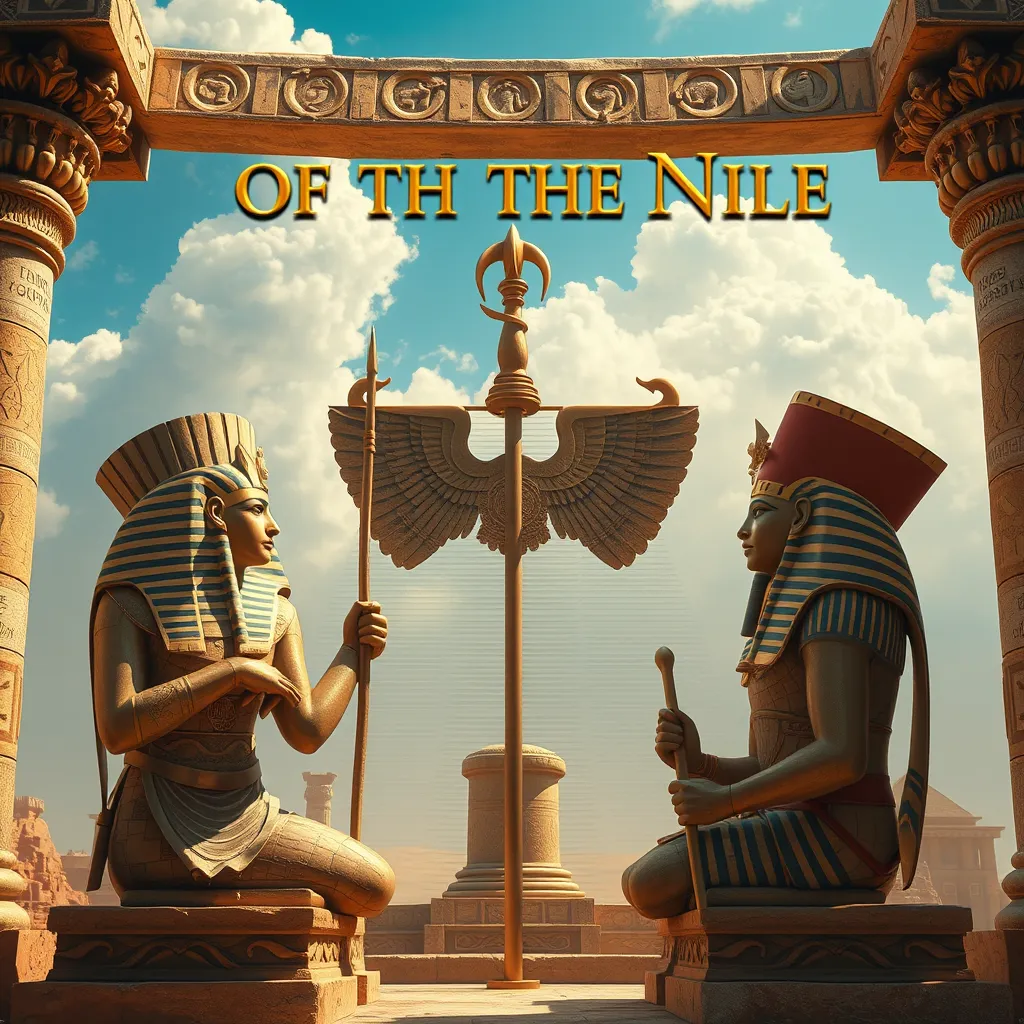The Kings and Queens of the Nile: A Journey Through Ancient Egyptian History
I. Introduction
Ancient Egypt, one of the most fascinating civilizations in history, flourished along the fertile banks of the Nile River. Renowned for its monumental architecture, advanced knowledge, and rich culture, this civilization has captivated the imaginations of people for centuries. Central to this civilization were the pharaohs, who were not only political leaders but also considered divine figures, embodying both the state and the gods.
The significance of pharaohs in Egyptian society cannot be overstated. They were viewed as mediators between the gods and the people, responsible for ensuring ma’at, or cosmic order, in both the earthly and spiritual realms. This article aims to explore the lives and legacies of the rulers of the Nile, shedding light on their remarkable achievements, the intricacies of their reigns, and their lasting impact on history.
II. The Rise of the Pharaohs
The establishment of the pharaonic system began with the unification of Upper and Lower Egypt around 3100 BCE. This momentous event marked the beginning of a centralized monarchy that would last for thousands of years. Narmer, also known as Menes, is credited with this unification, and he established the first dynasty, setting the stage for a succession of powerful rulers.
During the early dynastic period, several key developments and achievements transformed Egypt:
- Establishment of a centralized government with a bureaucratic system.
- Development of hieroglyphics as a writing system.
- Construction of monumental burial sites, including the early mastabas.
- Formation of a distinct religious structure centered around the worship of gods and the afterlife.
III. The Great Dynasties of Egypt
Ancient Egyptian history is traditionally divided into three major dynastic periods: the Old Kingdom, the Middle Kingdom, and the New Kingdom. Each period is characterized by remarkable achievements and notable pharaohs.
Old Kingdom (c. 2686–2181 BCE): Known as the “Age of the Pyramids,” this period saw the construction of the iconic pyramids at Giza. Notable pharaohs include:
- Khufu: Commissioned the Great Pyramid of Giza.
- Khafre: Built the second pyramid at Giza and the Great Sphinx.
Middle Kingdom (c. 2055–1650 BCE): Marked by political stability and cultural renaissance, notable pharaohs included:
- Mentuhotep II: Reunited Egypt and established the 11th dynasty.
- Senenmut: A notable official under Hatshepsut, influential in architecture and administration.
New Kingdom (c. 1550–1070 BCE): This era is often considered the height of Egyptian power and culture, with notable pharaohs such as:
- Hatshepsut: The first female pharaoh who expanded trade.
- Ramses II: Known for his military campaigns and monumental construction.
IV. Iconic Pharaohs and Their Reigns
Among the many rulers, a few stand out for their extraordinary contributions and legacies:
Hatshepsut: One of the few female pharaohs, she took on a male persona to gain legitimacy. Her reign (c. 1479–1458 BCE) is marked by extensive trade expeditions and monumental architecture, including her mortuary temple at Deir el-Bahari.
Akhenaten: A pharaoh known for his radical shift towards monotheism, worshipping Aten, the sun disk. His reign (c. 1353–1336 BCE) was controversial, leading to a temporary disruption in traditional religious practices.
Ramses II: Often referred to as Ramses the Great, his reign (c. 1279–1213 BCE) was noted for military conquests, extensive building projects, and the signing of the first known peace treaty with the Hittites. His legacy includes the temples at Abu Simbel and the Ramesseum.
V. The Role of Queens in Ancient Egypt
Queens in Ancient Egypt played a significant role in political and social spheres, often wielding considerable power and influence. They were not merely consorts but could act as regents or co-rulers.
Some of the most famous queens include:
- Nefertiti: Wife of Akhenaten, known for her beauty and influence in promoting the worship of Aten.
- Cleopatra VII: The last active ruler of the Ptolemaic Kingdom, known for her intelligence, political acumen, and relationships with Roman leaders Julius Caesar and Mark Antony.
- Tiye: The wife of Amenhotep III, she was influential in diplomatic relations and religious matters.
Royal marriages often solidified alliances and strengthened political power, playing a crucial role in the stability of the kingdom.
VI. Daily Life in the Time of the Pharaohs
Daily life in ancient Egypt varied significantly between the elite and common people. Governance was centralized, with the pharaoh at the top followed by a structured bureaucracy.
Religion was deeply intertwined with daily life and governance. The pharaoh was considered a divine ruler, and temples played a central role in societal structure. The lives of common people were often focused on agriculture, trade, and crafts. Many were involved in the construction of monumental projects, which provided employment but also reflected the pharaoh’s power and divine status.
VII. The Legacy of the Pharaohs
The legacy of the pharaohs is evident in the architectural wonders they left behind. The Pyramids of Giza, the temples of Karnak and Luxor, and the Valley of the Kings stand as testaments to their engineering prowess and artistic achievements.
In addition to architecture, the contributions of the pharaohs to art, science, and writing have had lasting impacts. Hieroglyphics, a complex writing system, remains a focus of study for linguists and historians alike.
Moreover, the fascination with pharaohs in modern culture continues to thrive. From movies and literature to exhibitions in museums, the allure of ancient Egypt captivates the world.
VIII. Conclusion
In summary, the kings and queens of the Nile shaped one of the most remarkable civilizations in history. Their achievements in governance, architecture, and culture laid the foundations for future generations. The enduring legacy of the pharaohs continues to inspire curiosity and admiration, inviting us to explore further the rich tapestry of Ancient Egypt.
For those interested in delving deeper into this fascinating subject, numerous resources are available, ranging from scholarly texts to documentaries that unveil the mysteries of this ancient civilization.




